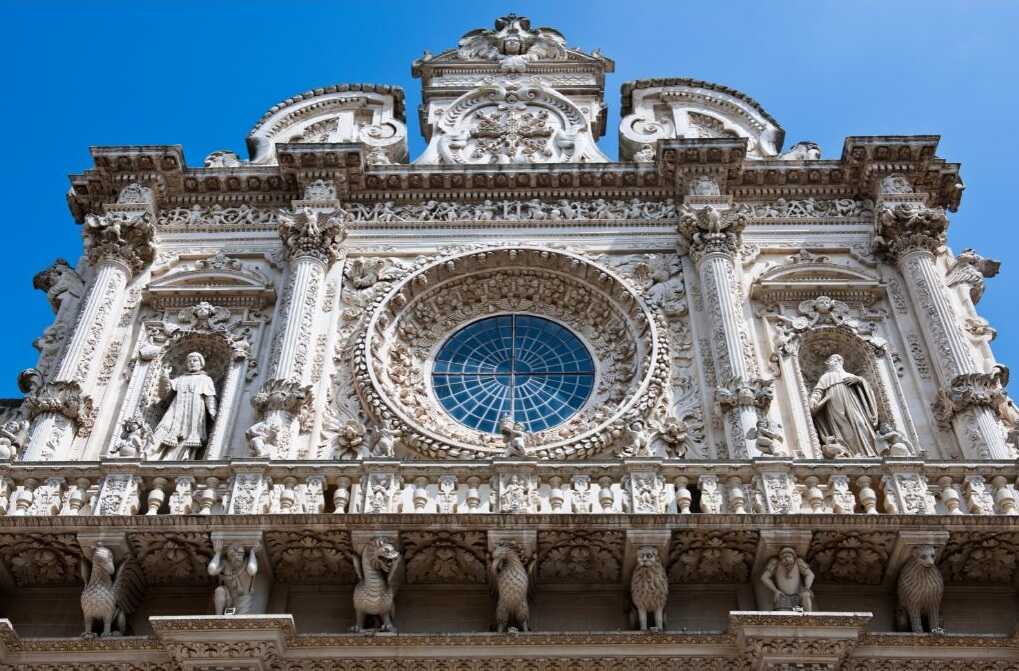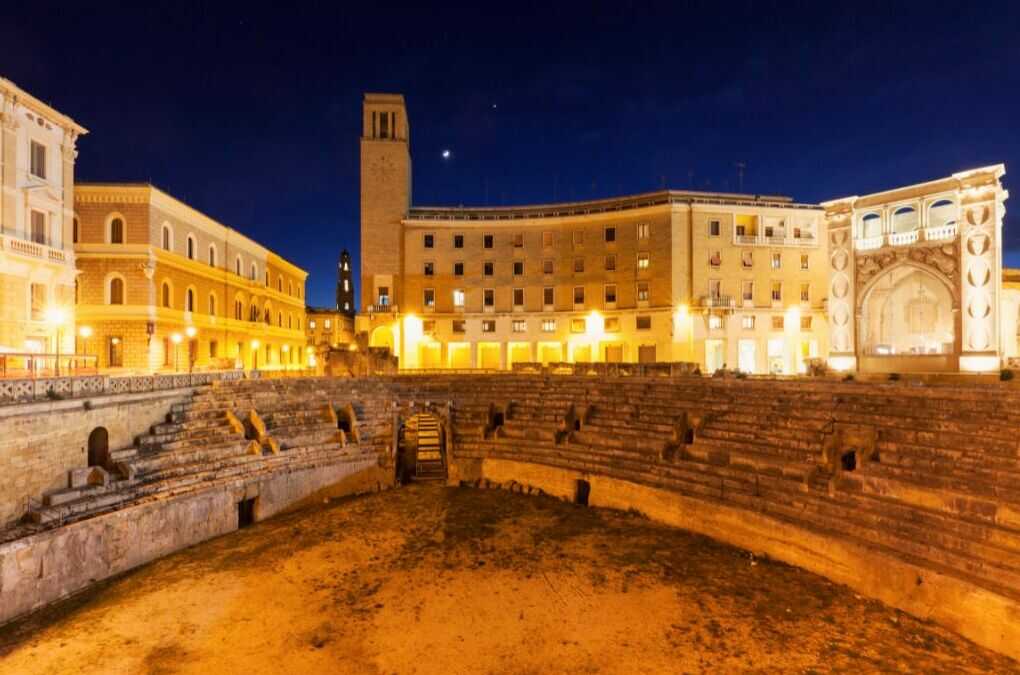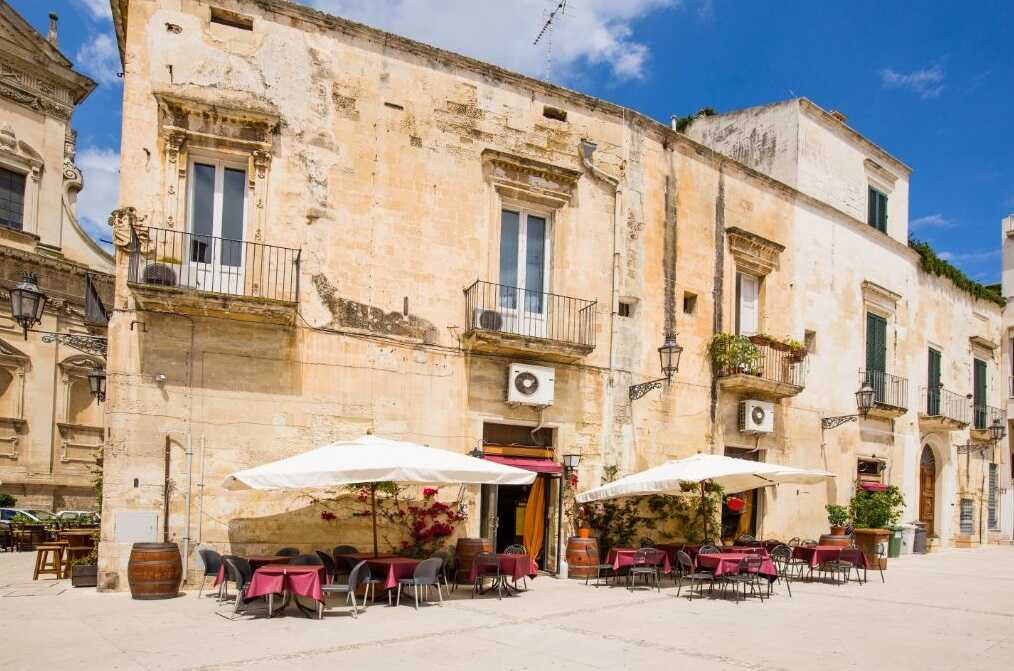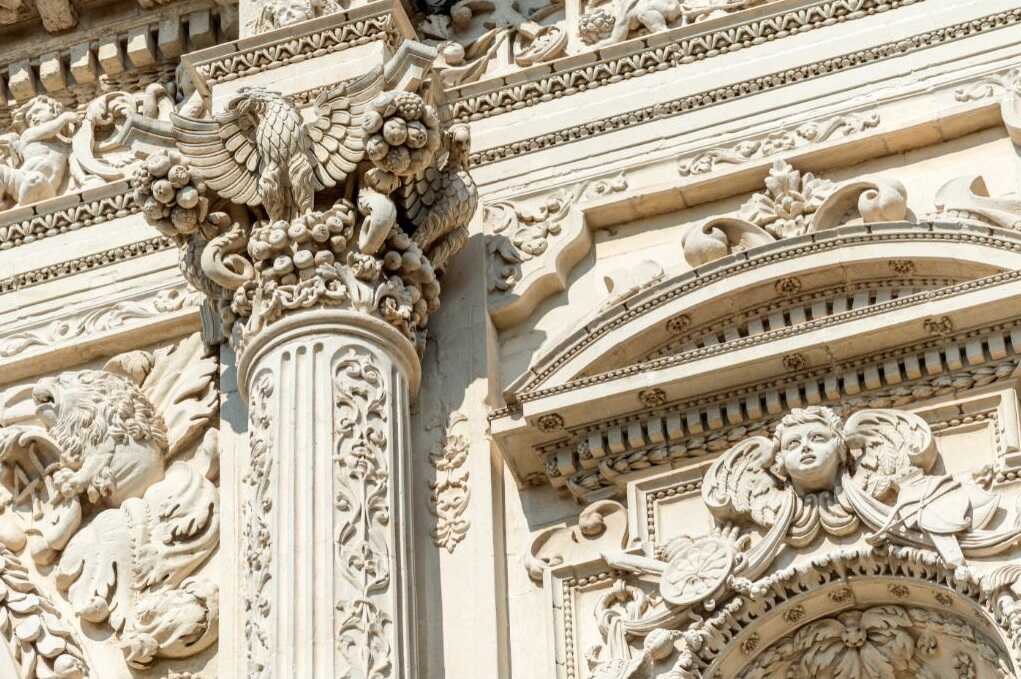Duomo of Lecce
Located in the historic center of Lecce, the Cathedral stands in one of the most evocative squares in Italy: Piazza del Duomo. This square, which surrounds the cathedral, is one of the most iconic places in Lecce, the hub of the city’s religious life. Here you can breathe in the quiet and fascinating atmosphere of the city, where time seems to have stopped.

The Duomo of Lecce: the church with two facades
The Cathedral of Lecce, dedicated to Maria Santissima Assunta, was built between 1659 and 1670 on a pre-existing medieval church. It was Giuseppe Zimbalo, known as Zingarello, who took care of the seventeenth-century restoration of the church and the construction of the bell tower. The architect chose not to alter the original plan and to stick to the dimensions of the previous Romanesque church.
Due to its position, oriented laterally with respect to the entrance to the square, the Cathedral was equipped with a second facade built on the left side. This “second facade” welcomes all visitors coming from Via Palmieri and entering the square, enchanting them with its statues and rich baroque decorations. In 2000, on the occasion of the Jubilee, the Cathedral was enriched with a new masterpiece, an imposing monumental bronze door, positioned on the main facade, the work of the Galatina artist Armando Marrocco.
Other historic buildings, including the Bishop’s Palace and the Bell Tower, fascinate visitors, adding further charm to the whole.
The masterpieces inside the Duomo
Inside, the Cathedral has a Latin cross plan, with three naves divided by pillars and semi-columns. The entire central nave and the transept are covered by a valuable 17th-century false ceiling in carved wood and enriched with gilding in which the paintings are set: “The Preaching of St. Oronzo”, “Protection from the Plague” and “The Martyrdom of St. Oronzo” and in the transept, “The Last Supper”. No less important are the various colored stained glass windows that allow the characters of the Bible to be seen through transparency, in a play of light.
The crypt
Through the stairs located in the main nave, you descend into an underground area of the Cathedral: the Crypt of the Duomo.
The 16th-century crypt, dedicated to the Virgin Santa Maria della Scala, has numerous chapels and altars inside, with decorations and frescoes that date back to different historical periods. The architecture of the crypt is characterized by arches, columns and vaults, typical of Lecce Baroque art.
Having been a burial area, funerary epigraphs and ossuaries are still present in the majolica flooring. Local tradition has it that the relics of the saints Oronzo, Giusto and Fortunato, patrons of Lecce, were buried in the Crypt. However, despite several explorations carried out in different eras, they have never been found.

How to get around Puglia by car
Puglia is a large region rich in natural and cultural beauty, so getting around by car is one of the best solutions for exploring its wonders in total freedom. With two main airports, Bari and Brindisi, and a good road network, it is easy to reach the main tourist destinations. Let’s look in detail at […]

The Boulangerie: historic bakery in Lecce
Do you want to visit Lecce and experience the typical Salento in one go? Well, if you have very little time at your disposal, I can only recommend one of the oldest places in the country, which over the years has undergone notable changes, becoming a multifunctional place, where you can taste the traditional delights of Lecce.

Basilica of Santa Croce in Lecce
If you are planning a visit to Lecce, one of the unmissable stops is undoubtedly the Basilica of Santa Croce, the first Baroque masterpiece of the city. The Basilica is located in via Umberto I, right in the historic center and next to another important structure: the former Celestine convent or Palazzo dei Celestini. Some […]

Roman Amphitheatre of Lecce
In the heart of the baroque city of Lecce, one of the most fascinating and significant monuments, which tells thousands of years of history, is the Roman Amphitheater. This extraordinary building, testimony to the glorious past of the ancient city of Lupiae, is one of the main tourist attractions of Lecce and an unmissable stop […]

Historic center of Lecce
Lecce, known as the “Florence of the South“, is one of the most fascinating destinations for those visiting Salento. With its thousand-year history, its fascinating mix of baroque art and centuries-old traditions, the historic center of the city offers a unique experience that captures the heart of every tourist. If you are traveling in Salento, […]

One-Day itinerary in Lecce
What to do in Lecce in one day? Among churches, abbeys, amphitheatres, squares and museums... it is possible to follow an itinerary that will give you a 360-degree experience of this wonderful Apulian city.


